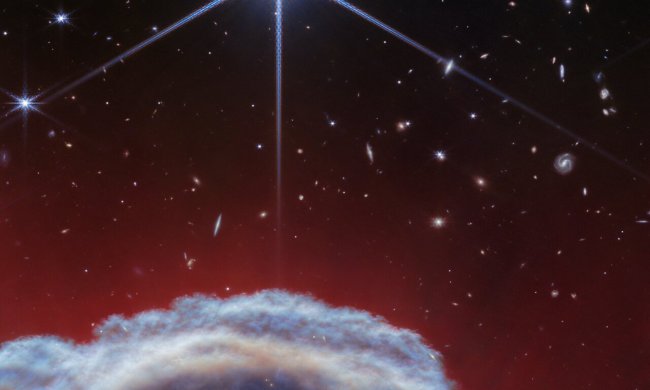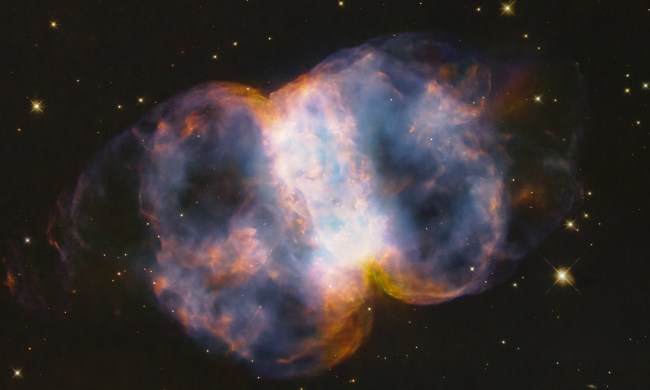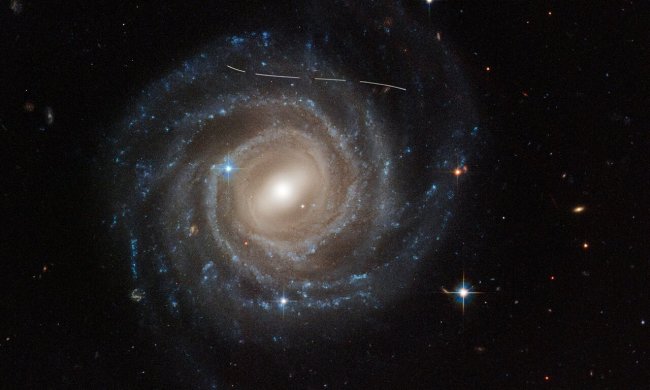This week’s image from the Hubble Space Telescope shows two galaxies which are in the process of merging together, in the system VV-689. This system is known as the Angel Wing due to the wing-like shape created as the two galaxies collide.
This particular image was taken as a follow up to a citizen science project called Galaxy Zoo. Galaxy Zoo invited members of the public to assist in astronomical research by helping to identify and classify different types of galaxies from data collected by telescopes.

The project has been running since 2007, and during that time 15 different versions of the project have received millions of classifications from the public to help identify bright galaxies, interacting or merging galaxies, other phenomena such as supernovas, and more. A Galaxy Zoo Hubble project run between 2010 and 2012 focused on data from Hubble specifically, comparing older galaxies to their younger counterparts.
There was also a similar project called Radio Galaxy Zoo: LOFAR which invited the public to help identify supermassive black holes using data from radio telescopes.
Following the success of the Galaxy Zoo project — which is still open to contributions, if you’d like to help out — researchers using Hubble began a follow-up project called Zoo Gems, which looked more closely at particularly interesting galaxies identified as part of Galaxy Zoo. This made use of short gaps in Hubble’s schedule which would otherwise be unfilled, in order to take images of attractive and interesting objects.
“Hubble’s Advanced Camera for Surveys took detailed follow-up observations of noteworthy objects from both projects (Galaxy Zoo and Radio Galaxy Zoo: LOFAR),” Hubble scientists write. “In keeping with Galaxy Zoo’s crowdsourced nature, the public cast 18,000 votes to choose targets for follow-up Hubble observations. The selected targets include ring-shaped galaxies, unusual spirals, and a striking selection of galaxy mergers such as VV-689.”



